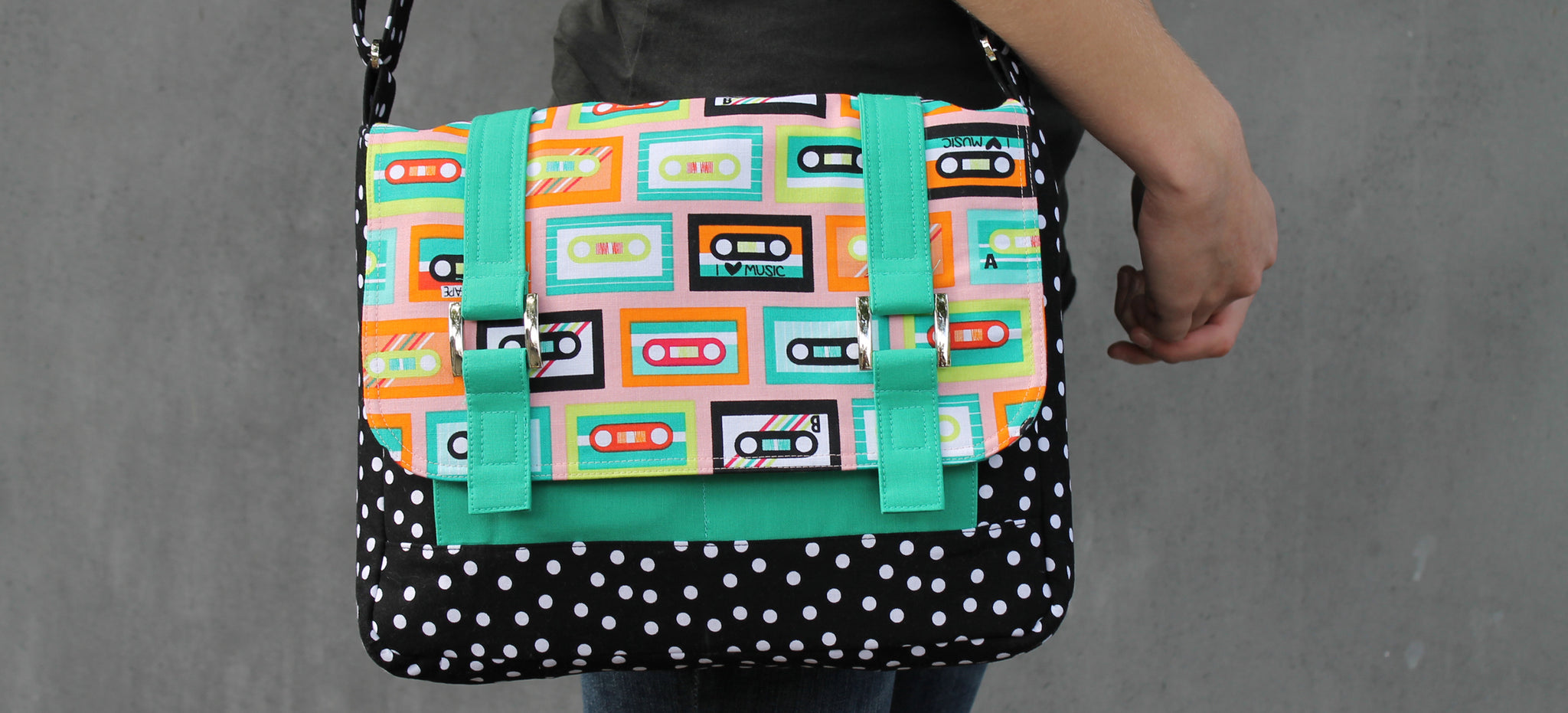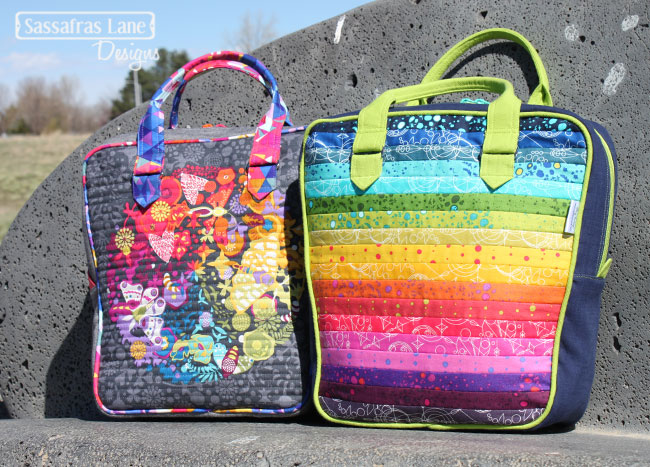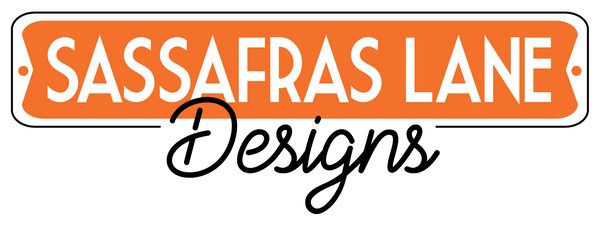
Unraveling the Mysteries of Interfacing
So, you've purchased a new bag pattern and it calls for interfacing, now what? Interfacing is used to add body to your project - clothes and bags alike! For the most part interfacing is a matter of personal preference. Do you want your bag to have structure and stand up on its own? Or, do you want it to be soft and drapable? There are fusible and non-fusible choices, woven and non-woven options and light weight fleece - all great for bag patterns! There is also a new-ish foam interfacing that now comes in fusible and sew-in options too! Did we scare you yet? =]
Fusible interfacings are generally our go-to choice.
PROS
- They stay in place!
- You can interface a large piece of fabric and cut pieces to save the time of interfacing them individually.
- Woven interfacings drape well. (You do need to keep the grain straight as you would with your fabric).
CONS
- Sometimes they just don’t stick as well as you'd like
- Sometimes they can leave a bumpy look on the front of your fabrics.
To avoid these cons, when applying, I like to iron first on the interfacing side lightly just enough to get it sticking, then flip the piece over and iron on the fabric side until it is firmly stuck. Be sure to read the manufacturer's instructions on the heat settings!

FAVORITES
- Super heavy stabilizer - Peltex Single Sided Fusible Stabilizer by Pellon (71F) - This thick stabilizer is great for the bottom of bags and woven bowls.
- Heavy weight interfacing - Fusible Hair Canvas by Pellon (HC120F) - It adds great body to your project!
- Medium weight interfacing - Fusible Face It Firm by Sew Lazy (SLG104) and Shape Flex Woven Cotton by Pellon (SF101) - Both are wonderful products and add medium, but drapable structure. (This is what I use to stabilize t-shirt when I make t-shirt quilts)
- Fleece - Dreamy Fusible Fleece by Sew Lazy (SLG106) and Fusible Fleece by Pellon (987F) - Sometimes fleece can be stretchy - these both stick well and don’t have stretch. Fleece can be used in place of heavy weight interfacing when you want a bag or project “quilt-like.” It is especially great to use when you pre-quilt your fabrics to use in your bag!
This is what we used to make our bag patterns:

Shelby Satchel
We used both Fusible Hair Canvas by Pellon and Fusible Fleece by Pellon to make our favorite iPad friendly travel satchel.

Cooper Carry-All
This scrap and precut friendly tote bag uses both Fusible Face It Firm by Sew Lazy and Fusible Fleece by Pellon. The perfect amount of padding to lug around a laptop or school books!

Cassidy Crossover
This crossover purse uses Shape Flex Woven Cotton by Pellon to get a little bit of structure needed for everyday adventures.

The Daily Duffle
My favorite weekend getaway bag uses both Fusible Hair Canvas by Pellon and Fusible Fleece by Pellon to obtain it's round shape!

Bubba Bowling Bag
To make this quilted, structured bowling style bag we used Fusible Hair Canvas by Pellon, Fusible Face It Firm by Sew Lazy, Fusible Fleece by Pellon and Peltex for a stable base.

Teddy Tote
Fusible Face It Firm by Sew Lazy brings these grocery totes to life and reinforces them so you can stuff them full of goods!
These of course are just our suggestions based on our personal experience. We have worked with each of these interfacing and have had good consistent results, but there are lots and lots of options! Let us know what your favorites and go-tos are - it’s always good to have options! Thanks for stopping in!



Comments
June G said:
Very informative. Thanks for sharing.
Sue Laufer said:
Great read. Thank you.
Karen Dimercuriodo said:
Do I need a lighter stabilizer for a tie quilt, many of them are silk ? I liked the info you gave me.
Lynn Domina said:
I have your Elm Street Bag pattern. It calls for both light weight and heavy weight fusible interfacing, but the pattern doesn’t say which you use on which pieces. Where does the heavy weight interfacing go, and where does the light weight interfacing go?